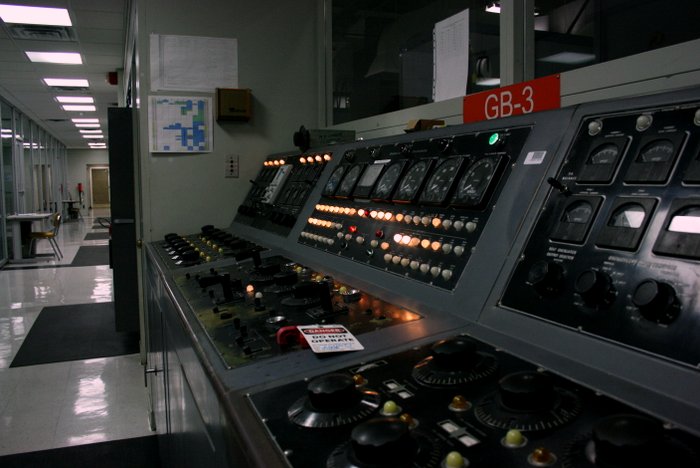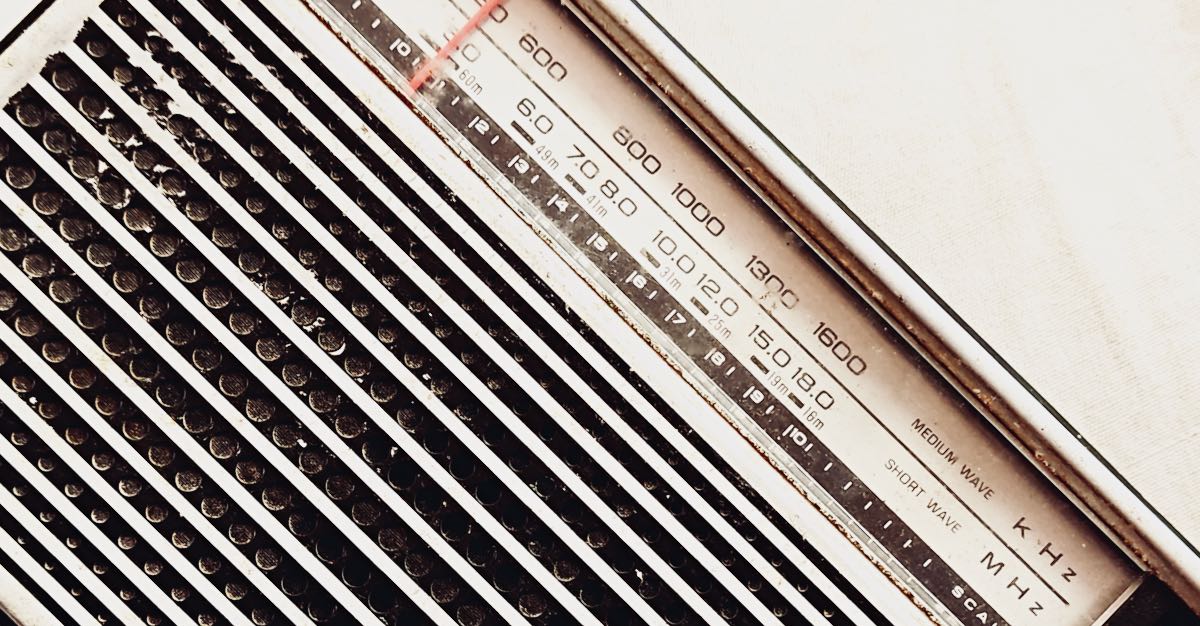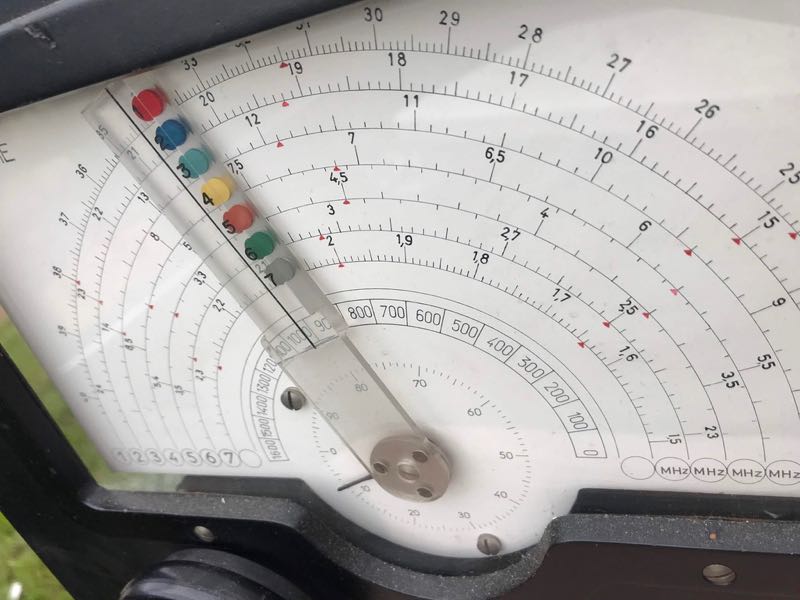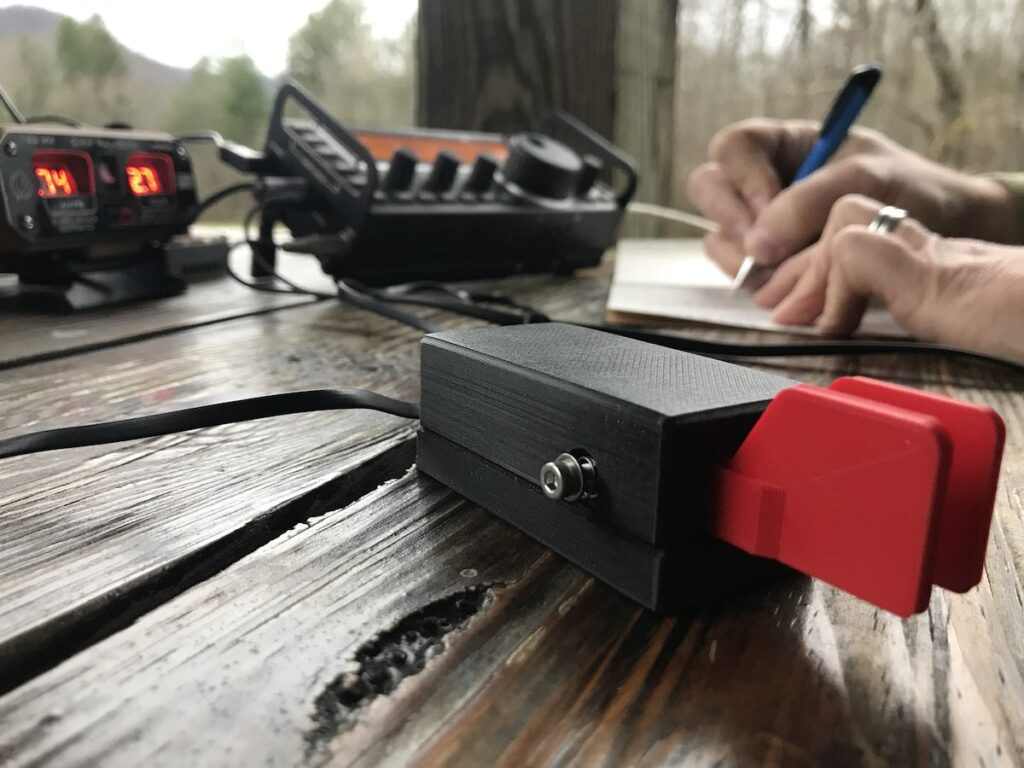A recent Radio World article summarizes a U.S. Senate Commerce Committee report raising concerns about the removal of AM radio from new vehicles. The report highlights AM radio’s role in national emergency alert systems and notes its low cost to manufacturers. It recommends Congress consider legislation to ensure AM capability remains standard in future vehicles.
Tag Archives: Car Radio
Radio Waves: Agriculture Supports AM, In-Car Radio Listening, Making Waves, and AI Future at the VOA
Radio Waves: Stories Making Waves in the World of Radio
Welcome to the SWLing Post’s Radio Waves, a collection of links to interesting stories making waves in the world of radio. Enjoy!
Many thanks to SWLing Post contributors Dennis Dura, Rich Cuff, and Dan Robinson for the following tips:
Ag Coalition Speaks Up for AM Radio Bill (Radio World)
Access to radio becomes even more important for America’s producers in times of emergency.
Producers of milk, wheat, cotton, sugar, corn, rice and many other farm and ranch products in the United States are speaking up in support of the federal legislation that would require AM radio in new vehicles.
Twenty-five agricultural groups have sent a letter to Capitol Hill endorsing the AM Radio for Every Vehicle Act. (Read the letter.)
The National Association of Broadcasters highlighted the letter. It said the bill has 196 cosponsors in the House and 44 in the Senate.
“Our members rely on AM radio and the vital services it provides daily,” they wrote.
“AM radio is a source of weather, commodity and national farm policy updates for our members. Access to radio becomes even more important for America’s producers in times of emergency.” [Continue reading…]
AM/FM In-Car Listening Surges to Pre-Pandemic Norms (Radio World)
Edison Research releases its latest “Share of Ear” data
Pierre Bouvard is chief insights officer for Cumulus Media and Westwood One. This story originally appeared on his blog.
Edison Research’s quarterly “Share of Ear” study is the authoritative examination of time spent with audio in America. Edison Research surveys 4,000 Americans annually to measure daily reach and time spent for all forms of audio.
Since “Share of Ear” has been running continuously since 2015, it affords an opportunity to examine an eight-year view of American audio usage. Here are the major trends:
- The proportion of in-car AM/FM radio listening has surged from the prior year to pre-pandemic norms
- For all ad-supported audio, the proportion of at-home listening remains elevated
- Spoken word is on the rise: All forms of non-music content (News, Personalities/Talk, and Sports) increased strongly during the pandemic; Since then, spoken word growth has accelerated
- Podcast shares are up +575% since 2016
- Pandora/Spotify ad-supported music streaming shares are down -31% over the same period
- AM/FM radio streaming’s audience share is now greater than Pandora/Spotify combined
- At a 69% share overall and a massive 85% in-car share, AM/FM radio remains the dominant ad-supported audio platform. [Continue reading…]
Still making waves after 100 years (Mail and Guardian)
South Africa first came into my life as a young boy in Canada for two reasons.
One, I had an uncle who worked for a shipping company. Among other things, the company imported goods from and exported goods to South Africa.
A ship carrying South African tinned pineapple, bound for Montreal, sank in the St Lawrence River in the 1960s. My uncle was involved in the salvage operation, and, as a consequence, my family and many other relatives ate tinned pineapple from South Africa for the next few years — we grew to hate it.
The second reason was radio. My grandfather gave me a shortwave radio when I was about eight years old. One of the distant radio stations that blasted into my bedroom, loud and clear, was Radio RSA (now Channel Africa), the voice of the South African government of the day.
I listened to Radio RSA, as I listened to any shortwave station I could pick up, because it was exotic.
The easiest stations to pick up in those days were from the big broadcasting countries — the BBC, Radio France Internationale, the Voice of America, Radio Moscow and Radio Havana Cuba, to name but a few. Even Albania had a strong-signal broadcaster — Radio Tirana. [Continue reading…]
VOA faces internal backlash over newsroom guidance on use of generative AI to voice news reports (FedScoop)
Journalists at VOA have pushed back on newsroom leadership’s AI policy regarding “synthetic voices,” documents obtained by FedScoop show.
Dozens of journalists and staff at Voice of America are strongly opposed to the state-owned news organization’s plan to use AI-generated synthetic voices, documents obtained by FedScoop show, with employees expressing concerns that the tool could breed mistrust with its audience, cause misinformation to spread and potentially eliminate jobs within the newsroom.
VOA, which has a weekly worldwide audience of approximately 326 million, is the largest and oldest of U.S. government-funded news networks and international broadcasters.
The news organization released internal guidance on the use of artificial intelligence in November, following months of discussions with journalists and labor representatives that stirred up backlash and controversy within the news organization.
FedScoop obtained the new AI guidance as well as a letter of opposition — signed by dozens of journalists within the news organization — that was sent to VOA leadership in October and has not been made public until now.
“We are deeply concerned that a portion of the Artificial Intelligence guidance that the agency is preparing to issue will do more harm than good,” the signed letter said. “Specifically, we object to language that would allow Artificial Intelligence to be used ‘for voicing scripts.’” [Continue reading…]
Do you enjoy the SWLing Post?
Please consider supporting us via Patreon or our Coffee Fund!
Your support makes articles like this one possible. Thank you!
Radio Waves: Pirating Putin, Refuge Hosted Radio in South Sudan, Drivers Still Love Radio, and TIS Request
Radio Waves: Stories Making Waves in the World of Radio
Welcome to the SWLing Post’s Radio Waves, a collection of links to interesting stories making waves in the world of radio. Enjoy!
Many thanks to a number of SWLing Post contributors including John, Andrea, and Dennis Dura for the following tips:
The pirate-radio DJ who took on Putin (The Economist)
Tens of thousands of ordinary Russians are joining the resistance
n a bedsit in Vologda, a Russian city 500 miles north of Moscow, a man sat at a desk surrounded by recording equipment. In his early 60s, tall and thin with long grey hair, glasses and a moustache, he looked like an ageing rock star making a new album. His name was Vladimir Rumyantsev. He lived alone, and his day job was as a stoker, tending a furnace in a factory boiler-room. In the evenings he was the dj of his own pirate-radio station, broadcasting anti-war diatribes against Putin’s “special military operation” in Ukraine.
Rumyantsev set up the station before the war as a hobby. Radio Vovan (a play on a nickname for Vladimir) mainly broadcast music from the Soviet era that he found in online archives. He said he needed a break from oppressive state propaganda. “Some kind of ‘patriotic’ hysteria started on the airwaves, and as the sole occupant of the flat I voted unanimously to ban the broadcasting of federal tv and radio channels in my home. Well, I had to create something of my own to replace it,” he wrote to me. [Continue reading. Note that this article may be behind a paywall from your location…]
In South Sudan, Refugees Train as Radio Hosts to Keep Residents Informed (VOA News)
JOHANNESBURG, SOUTH AFRICA —
Jabrallah Tia was a teacher in Sudan in 2011 when a brutal war forced him to flee to a refugee camp in newly established South Sudan. Thirteen years later, Tia is still in a camp but with a new career: journalist.
The Ajuong Thok camp in the Ruweng Administrative Area is home to almost 40,000 refugees and displaced people, most from Sudan. Another influx is expected soon, after a fresh conflict broke out in April.
“It’s terrible now when Sudan has started another war. … We’re expecting more people to come from Sudan, as they’re fleeing the war there,” Tia told VOA in a video interview over Zoom.
He knows what that’s like. Tia had to leave everything behind when he fled his home in South Kordofan state. But he said he has found new meaning in his journalism work. Continue reading
Radio Waves: G4 Solar Storm, AM for Car Safety, AI DJs Next Month, and NYC Pirate Fined $2 Million
Radio Waves: Stories Making Waves in the World of Radio
Welcome to the SWLing Post’s Radio Waves, a collection of links to interesting stories making waves in the world of radio. Enjoy!
Many thanks to SWLing Post contributors Troy Riedel, Dennis Dura, and Richard Cuff for the following tips:
Strongest solar storm in nearly 6 years slams into Earth catching forecasters by surprise (Space.com)
The powerful solar storm supercharged auroras as far south as Colorado and New Mexico.
The most powerful solar storm in nearly six years slammed Earth today (March 24), but strangely, space weather forecasters didn’t see it coming.
The geomagnetic storm peaked as a severe G4 on the 5-grade scale used by the U.S. National Oceanic and Atmospheric Administration (NOAA) to assess the severity of space weather events. The storm’s unexpected ferocity not only made auroras visible as far south as New Mexico in the U.S., but it also forced spaceflight company Rocket Lab to delay a launch by 90 minutes.
Geomagnetic storms are disturbances to Earth’s magnetic field caused by solar material from coronal mass ejections (CME) — large expulsions of plasma and magnetic field from the sun’s atmosphere. It turns out that this particular geomagnetic storm was triggered by a “stealth” CME which — as the name suggests — is rather tricky to detect. [Continue reading…]
Congressman Says Make AM a Mandatory Car Safety Feature (Radio World)
Gottheimer also supports federal spending on AM infrastructure to assure continuity of service
A congressman from New Jersey wants the government to add AM radio to the list of safety equipment that carmakers must include in their vehicles.
Rep. Josh Gottheimer has called on the National Highway Traffic Safety Administration to “add AM radio to the Federal Motor Vehicle Safety Standards to require that all automakers, including EV manufacturers, include AM radio as a stock feature in their vehicles. Federal Motor Vehicle Safety Standards are the minimum safety standards that a manufacturer must meet when making a vehicle — including requirements related to airbags, brakes, seatbelts, tires, controls and displays.”
The National Association of Broadcasters welcomed his effort.
Gottheimer, a Democrat who represents a district along the state’s northern border, held a news event next to a Tesla dealership in Paramus, N.J., along with New Jersey Broadcasters Association Executive Director Jordan Walton. [Continue reading…]
AI-generated DJs are coming to radio stations in the US and Canada next month (Business Insider)
An AI-generated radio DJ could be coming to your local radio station.
RadioGPT, a GPT-4-powered radio content generator from media company Futuri, is set to debut next month in radio stations in the US and Canada, Axios Cleveland reported.
Powered by the same tech that ChatGPT draws upon, RadioGPT aims to man radio airtime spots with AI-generated scripts and voices, as well as tailored local news content.
You can listen to a demo from the company that gives you a preview of what the AI-generated DJ voices sound like — which tell listeners that they are, in fact, fully AI — sprinkled between curated songs. The page includes snippets of RadioGPT-generated voices presenting news, weather, and traffic updates.
“Anything a radio human can do, I can do better,” one of the AI hosts can be heard saying in between songs. “Every voice you hear is 100% AI.” [Continue reading…]
FCC Fines 15 Year-Old Pirate Radio Station in NYC $2 Million (Vice)
The FCC is using its new powers to ask from the maximum fine from an Ecuadorian pirate radio station that’s run for more than 15 years.
The Federal Communications Commission (FCC) is using a new law to fine a pirate radio station operating in New York City for more than $2 million. For 15 years, Impacto 2, which has been operated by two brothers, has broadcast Ecuadorian news, culture, sports, and talk-radio on 105.5 FM in Queens. The feds have tried to shut it down repeatedly, but have never succeeded.
The FCC announced the fine in a press release last week. “The Commission proposed the maximum penalty allowable, $2,316,034, against brothers César Ayora and Luis Angel Ayora for pirate radio broadcasting in Queens, New York,” the release said. The FCC also said it was trying to seize $80,000 in equipment from a man broadcasting pirate radio in Eastern Oregon.
The Ayoras have been on the FCC’s radar since 2008 when they started broadcasting Impacto 2 for the Ecuadorian community in Queens: “The brothers César and [Luis] Angel Ayora in September 2008 founded the first Ecuadorian FM radio station in New York City. . . The station never sleeps, because a team of communication professionals are working for you 24 hours a day,” their website, which is currently down, said. The station is broadcast over the internet and has moved around the FM spectrum several times over the years. [Continue reading…]
Do you enjoy the SWLing Post?
Please consider supporting us via Patreon or our Coffee Fund!
Your support makes articles like this one possible. Thank you!
Radio Waves: Listeners Share LRA36 Recordings, CW Clock, Tabletop Radio, and Dropping AM in Cars
Radio Waves: Stories Making Waves in the World of Radio
Welcome to the SWLing Post’s Radio Waves, a collection of links to interesting stories making waves in the world of radio. Enjoy!
Many thanks to SWLing Post contributors Adrian Korol, Richard Cuff, and Dennis Dura for the following tips:
Radio Nacional Arcangel San Gabriel picked up around the world (Radio Nacional)
Radio Nacional Arcangel San Gabriel broadcasts on the short wave on Wednesdays from 21 to 23 UTC and on Saturdays from 21 UTC until 03:00 on Sunday on frequency 15476 Khz (USB).
Due to improvements in the audio chain and transmission line and good propagation, we are receiving messages from listeners who had not been able to listen to it for decades and also reception reports from countries such as India, Iceland, Japan, United States, Spain, Italy, United Kingdom, Mexico, Chile, Brazil, Uruguay and all the National territory.
During the summer we broadcast a program called “Uniendo Voces”, a production of the Joint Antarctic Command, the University of Quilmes and RAE, with the presentation of Juan Carlos Benavente.
We also share with you videos and posts in which listeners from around the world share their reception of LRA36. [Continue reading…]
Morse Code Clock For Training Hams (Hackaday)
It might seem antiquated, but Morse code still has a number of advantages compared to other modes of communication, especially over radio waves. It’s low bandwidth compared to voice or even text, and can be discerned against background noise even at extremely low signal strengths. Not every regulatory agency requires amateur operators to learn Morse any more, but for those that do it can be a challenge, so [Cristiano Monteiro] built this clock to help get some practice.
The project is based around his favorite microcontroller, the PIC16F1827, and uses a DS1307 to keep track of time. A single RGB LED at the top of the project enclosure flashes the codes for hours in blue and minutes in red at the beginning of every minute, and in between flashes green for each second. [Continue reading…]
The Changing Face of Tabletop Radios (Radio World)
While some still offer OTA reception, the specialty segment is dominated by online connectivity
There was a time, of course, when radios were fixtures in people’s homes. But according to Edison Research’s “Infinite Dial 2022” report, the percentage of U.S. homes with “zero” radios inside went from 4% in 2008 to 39% in 2022.
Among the radios that remain, clock and emergency radios have the best chances of justifying their presence to internet-centric consumers. But good ol’ fashioned tabletop radios? AM/FM receivers housed in eye-appealing laminated wood cases with big speakers and hefty knobs?
Mass-market companies such as Panasonic and Sony have abandoned such products. But specialty/quality brands such as C. Crane, Grace Digital, Sangean and Tivoli Audio have not.
These brands bring fresh approaches to the tabletop radio segment through innovation and the harnessing of streaming technology. Still, it’s an uphill battle in a world obsessed with all things internet.
There are several reasons conventional AM/FM tabletop radios have been disappearing from homes.
The first and most obvious is that even by the beginning of this century, radio had long ceased being a destination medium around which the family gathered to listen. In recent decades, the more common uses were morning wakeups, rush-hour commutes, sports on the go and weather emergencies, all well-served by portable radios, though there was still some degree of at-home listening. [Continue reading…]
Who Benefits By Removing AM From Cars? (Radio World)
Three perspectives on this hot potato threat
Car manufacturers claim they cannot suppress noise getting into the AM signals in their electric vehicles. This article presents the viewpoint of three people who beg to disagree.
Tom King, the chairman of Kintronic Labs Inc., is an expert on AM transmission and noise interference. His company manufactures most of the phasing cabinets for directional arrays on AM stations around the world. Continue reading
Radio Waves: Bell Labs Horn Antenna At Risk, Tuckerton Tower, The Warsaw Radio Mast, and End of AM Car Radio?
Radio Waves: Stories Making Waves in the World of Radio
Welcome to the SWLing Post’s Radio Waves, a collection of links to interesting stories making waves in the world of radio.
A special thanks to SWLing Post contributor, Dennis Dura, for these news tips! Enjoy:
Historic Bell Labs Horn Antenna At Risk, Holmdel Citizens Group Says (Patch.com)
Citizens for Informed Land Use is against a proposal before the Planning Board to reclassify the former Nokia site for redevelopment.
HOLMDEL, NJ — Citizens for Informed Land Use, Preserve Holmdel and others are rallying to preserve the Bell Labs Horn Antenna, which they say is threatened if the 43-acre site it stands on is reclassified for residential development.
The property at 791 Holmdel Road is home to the Bell Labs Horn Antenna, once used by Bell Labs scientists Dr. Robert Wilson, who still lives in the township, and Dr. Arno Penzias, to study microwave radiation from beyond the Milky Way, the organization says.
The site is also described by the group “as the highest point in Monmouth County, providing remarkable views of Raritan Bay and Manhattan.”
The scientists’ “research confirmed evidence of the Big Bang Theory as the origin of the universe and earned both men a Nobel Prize in Physics in 1978,” the land use group said in a news release.
But on Nov. 22, the Township Committee approved a resolution directing the Planning Board to study whether the former Nokia site in the Crawford Hill section of Holmdel – the site of the Horn Antenna – should be reclassified as an “area in need of redevelopment.” [Continue reading…]
New Jersey’s Disturbing Monolith Secrete: The Rise and Fall of Tuckerton Tower (YouTube)
In Tuckerton, NJ, a massive cement monolith sits out of place, and upon closer inspection, out of time. You see, this gigantic block was once the base of the tallest structure in North America and the second tallest in the world after the Eiffel Tower. Built in 1912, the Tuckerton tower stood at 825 feet and was the first and most potent transatlantic broadcasting tower ever, but here’s the twist, although it was on US soil, it was entirely built by and belonged to Germany.
Why the tallest tower on earth collapsed | The Warsaw Radio Mast (YouTube)
The Warsaw Radio Mast (Polish: Maszt radiowy w Konstantynowie) was a radio mast located near G?bin, Poland, and the world’s tallest structure at 646.38 metres (2,120.7 ft) from 1974 until its collapse on 8 August 1991.
Designed by Jan Polak, and one of the last radio masts built under Communist rule, the mast was conceived for height and ability to broadcast the “propaganda of the successes” to remote areas such as Antarctica. It was the third tallest structure ever built, being surpassed as the tallest by the Burj Khalifa tower in the United Arab Emirates in 2009 and Merdeka 118 tower in Malaysia in 2022. Designed by Jan Polak, its construction started in July 1970, was completed on 18 May 1974, and its transmitter entered regular service on 22 July of that year. The opening of the mast was met with extensive celebration and news coverage by the Polish Film Chronicle.
Radio Waves: Radio Atlantique, Car Radio History, BBC Norfolk Features CW, and IC-R30 Firmware Update
Radio Waves: Stories Making Waves in the World of Radio
Because I keep my ear to the waves, as well as receive many tips from others who do the same, I find myself privy to radio-related stories that might interest SWLing Post readers. To that end: Welcome to the SWLing Post’s Radio Waves, a collection of links to interesting stories making waves in the world of radio. Enjoy!
Many thanks to SWLing Post contributors Trevor, Dennis Dura, and Markku Koskinen for the following tips:
Radio Atlantique Broadcasts Against All Odds (Red Tech)
Its broadcasting territory is restricted and unlikely to grow significantly, and for good reason. Since 1982, Radio Atlantique has been broadcasting in the heart of the French overseas territory of Saint-Pierre-et-Miquelon, a 252 square kilometers, self-governing Atlantic clump of islands just off the south coast of the Canadian province of Newfoundland. The radio station has cultivated its uniqueness, becoming a key partner in the local life and cohesion of the 6,000 or so Miquelonnais. However, this state of mind has not prevented the project from going through difficult times and bringing uncertainties to its future.
Broadcasting in the territory of Saint-Pierre-et-Miquelon is an extraordinary adventure every day. For example, coverage of the entire archipelago was only concluded in 2010 with effective broadcasting in Miquelon, only 18 nautical miles away from the main island. This challenge for the station has only reinforced its unique place within the islands’ society. The population on the islands is highly mixed, and the vast majority of the inhabitants have French and Basque origins. [Continue reading…]
The history of car radios, from AM to Apple (The Globe and Mail)
“Hey, Google. Play Toosie Slide by Drake.”
Within seconds, the Toronto pop singer’s silky voice wafts from the speakers of the ELS Studio audio system of my Acura MDX. Ten speakers in the cabin pump out trilling highs and chest-thumping bass, transforming my vehicle into a soothing audio studio on wheels. Bored, I flip over to SiriusXM for a little Hip-Hop Nation.
Modern car audio systems are so highly evolved, so seamless and so intuitive, it’s easy to forget that it wasn’t always this way. But it’s been 90 years since the first mass-produced car radio appeared, and the road to audio perfection has been a bumpy one indeed.
Michael Lamm remembers. At 84, the California-based auto historian’s car-ownership experience spans back to the early 1950s, when staticky car radios were powered by primitive vacuum tubes.
When he was growing up in Texas, he says he “didn’t really care that much about radio,” in part because programming was so limited. “I didn’t listen to the preachers who were constantly haranguing everybody.” [Continue reading…]
BBC Norfolk features ham radio Morse code (Southgate ARC)
January 11 was Learn your Name in Morse Code Day and Roger Cooke G3LDI was interviewed on BBC Norfolk by Chris Goreham about Morse
Roger has been a keen proponent of the advantages of Morse code since he started teaching it as a teenager when he was first licenced in 1956.
You can listen to the interview by fast-forwarding to 1:54:27 in this recording
https://www.bbc.co.uk/sounds/play/p0bcktml
Free Morse training courses are available Online, see
New Icom IC-R30 Firmware Update (via Markku Koskinen)
Updated Icom IC-R30 firmware has been posted on the Icom Japan web site.
Battery health status (Normal/Caution/Warning) judgment has been improved.
Click here to check it out and download at Icom Japan.
Do you enjoy the SWLing Post?
Please consider supporting us via Patreon or our Coffee Fund!
Your support makes articles like this one possible. Thank you!








